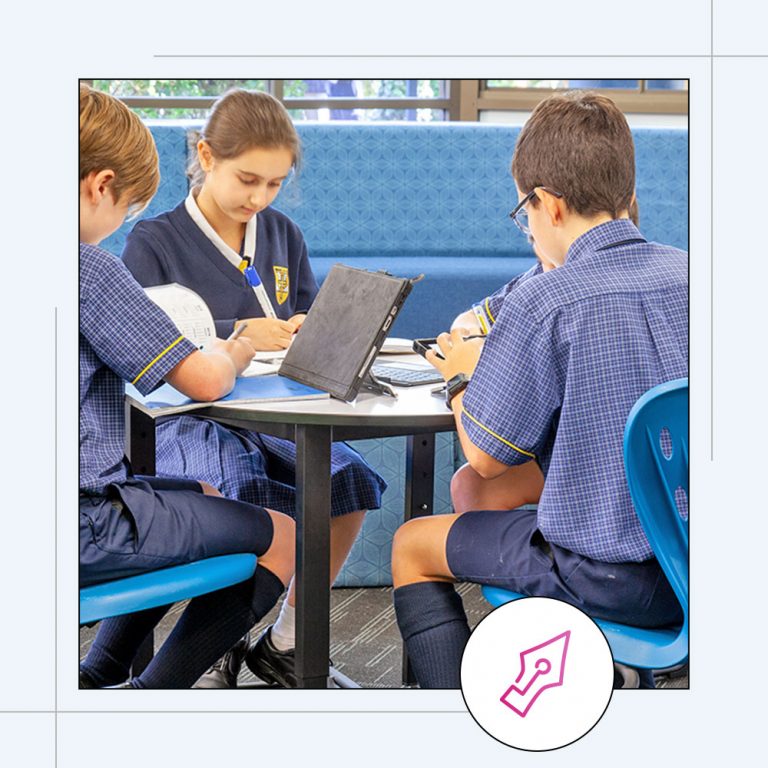St. John’s University defines co-teaching as “two or more instructors sharing a classroom experience to provide an enriched teaching and learning environment for a diverse student population.”
Co-teaching was born out of the need for quality instruction for students with disabilities, as well as given a push by the No Child Left Behind Act in the early 2000’s.
Although many co-teaching situations involve a subject area teacher teamed up with a special ed teacher, others involve different teacher combinations.
Co-teaching can be a great asset to the classroom if done correctly. Co-teachers must work together closely to make sure that all objectives are achieved.
The first step to co-teaching effectively is to understand which co-teaching model works best for your class and situation.

The Six Major Types of Co-Teaching
The six major types of co-teaching, as classified by SERC, are as follows:
One Teaching, One Observing
One teacher stands in front of the room and provides the instruction, while the other observes and tracks data regarding student learning and growth. Learning goals and expectations need to be agreed upon ahead of time for this model.
One Teaching, One Assisting
Similar to the first model, this method involves one teacher providing the instruction. The other teacher, however, will circulate the room and provide help to students as needed instead of collecting data.
Parallel Teaching
In this model, the teachers split the class into two sections. Each teacher takes one section and both teachers teach the same lesson at the same time.
Station Teaching
This approach to co-teaching is similar to parallel teaching in that two teachers split the students and instruction. However, in station teaching the teachers also divide the content between them. Students then go from one teacher to another to learn different parts of the content. A third, optional station can also be added for independent work.
Alternative Teaching
When a group of students needs extra help, one teacher can work with the small group, while the other teaches the larger group, in the approach called alternative teaching.
Team Teaching
In team teaching, two teachers teach the same content together simultaneously. Many co-teachers consider this the most difficult model of co-teaching.
The Pros and Cons of Co-Teaching
Next, you need to consider the pros and cons of co-teaching and each model of co-teaching in order to decide if it will work for you.
Three things to consider when making this decision include the impact on student learning, the impact on teacher relationships, and the impact on teacher workload.
Impact of Co-Teaching on Student Learning
Most of these teaching models are set up so that students can receive more help from a teacher.
Alternative Teaching provides a way for a small group of students to receive more practice away from the larger group, whereas the One Teaching, One Assisting model ensures that a teacher can give support to students who seem to be struggling during the lesson.
Recent research on student learning shows that students in smaller classroom settings learn more than their peers in larger classes.
The National Education Association (NEA) cites a 20 year study in Tennessee for proof. This study found that kindergarten students in classes with an average of 15 students were about two months ahead of students in classes of 22-25 students.
These same students graduated from high school at a higher level than their peers, provided that they received three consecutive years of small class instruction.
Although it’s hard to say whether co-teaching models provide the same dramatic impact on student learning, however the use of these particular models in a constructive manner should certainly help student advancement.

Impact of Co-Teaching on Relationships
Co-teachers need to be open to learning from each other.
Working closely with other teachers can be challenging, as many teachers have different teaching styles.
However taking a team approach to teaching means you can collaborate and draw on each other’s strengths.
The co-teacher relationship should be one of equality, with a mutual exchange of ideas, not a situation where one teacher “takes the lead” and the other blindly follows.
Impact of Co-Teaching on Teacher Workload
When content area teachers are matched up with special ed teachers, it is easy to fall into the pattern where the content area teacher is doing all of the instruction and the special ed teacher is left to do assessments and work one-on-one with select students.
In this scenario, both teachers may feel as if they are carrying a majority of the workload.
According to Wendy Murawski, Ph.D. in an article for The Council for Exceptional Children, special education teachers need to become advocates for stressing the “co” in co-teaching.
That may mean stressing to an administrator that they play an important role in the classroom and should not be pulled during that time for IEP meetings or to sub for another class.
Ultimately, co-teaching should make the workload more manageable for both teachers, during class and planning time.
Conclusion
Most teachers would do anything in their power to make sure their students receive a good education. However, they either aren’t educated on the benefits of co-teaching or don’t have enough time to adequately plan before being thrown into a classroom with another teacher.
If you find yourself in this position, discuss the different models of co-teaching with your co-teacher.
You can get a better sense of which models might be the most beneficial for your students.
Then, you should openly address the challenges you face as you face them. Make sure you are a good model of collaborative working for your students by keeping the dialogue open and the ideas flowing equally between both parties.
When teachers work together successfully, students should receive nothing but benefits.











